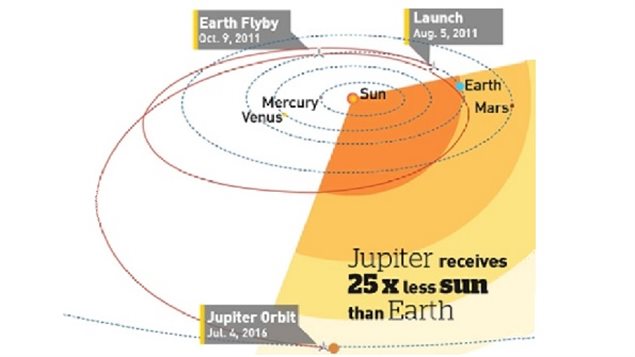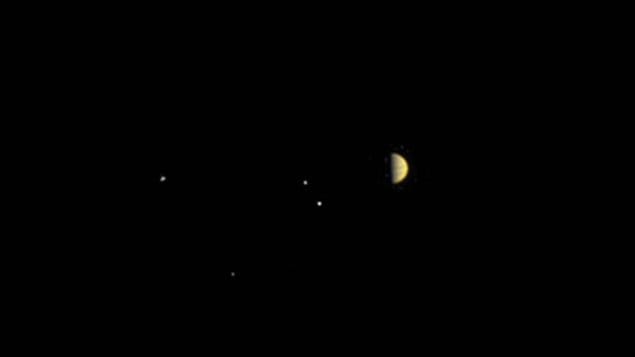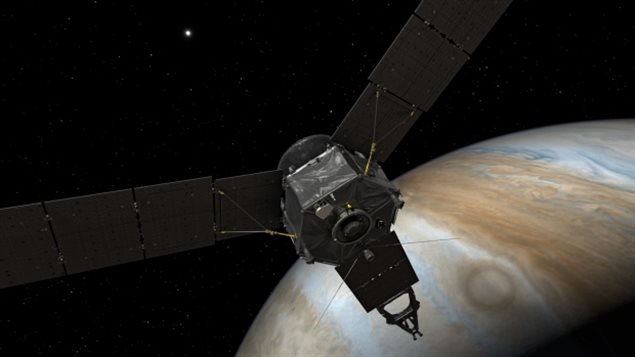Exploring the giant gas planet-critical manoeuvring
It’s an extremely ambitious project. The space probe Juno has been travelling for years outward bound from Earth, heading toward Jupiter. The only solar powered spacecraft sent to the outer reaches of the solar system, Juno is part of the $1 billion effort to learn more about Jupiter
Paul Delaney is a professor of physics and astronomy at York University in Toronto Ontario.
Listen
It’s an extremely delicate and precision operation to get the probe into position.
Right now the 1,600 kg spacecraft is travelling far too quickly to be captured by Jupiter’s gravity, and as it approaches Jupiter, the gravity will accelerate the probe even faster, to the equivalent of 266,000 km/h.
To slow the craft down enough to establish an orbit, the main thruster must be fired at precisely the exact moment, provide the exact counter thrust, and burn for exactly the right amount of time to slow it down and position it for an elliptical orbit around Jupiter.
There is only one chance for this, so if anything goes wrong, the craft will simply sail past into deep space. The engine burn begins late tonight at 11;18pm Eastern Time.

As professor Delaney points out, the huge planet emits extremely strong radiation, and the probe will fly twenty circuits during which it will be subject to severe radiation exposure. For protection, the scientific instruments are housed in a 180-kilogram titanium vault.
Juno’s mission hopes to enable scientist to look deep into Jupiter’s atmosphere to measure composition, temperature, cloud motions and other properties
It will also map Jupiter’s magnetic and gravity fields, revealing the planet’s deep structure and explore and study Jupiter’s magnetosphere near the planet’s poles, especially the auroras – Jupiter’s northern and southern lights – providing new insights about how the planet’s enormous magnetic force field affects its atmosphere.

Another important aspect will be determine how much water is in Jupiter’s atmosphere. This in turn will help scientist figure out which planet formation theory is correct (or if new theories are needed)
The mission expected to last 20 months, will see the probe make 37 orbits around the planet. However like Galileo, which orbited Jupiter for eight years before crashing into the planet in 2003, Juno will also be sent to its destruction on the planet when the mission ends.
additional information-sources







For reasons beyond our control, and for an undetermined period of time, our comment section is now closed. However, our social networks remain open to your contributions.